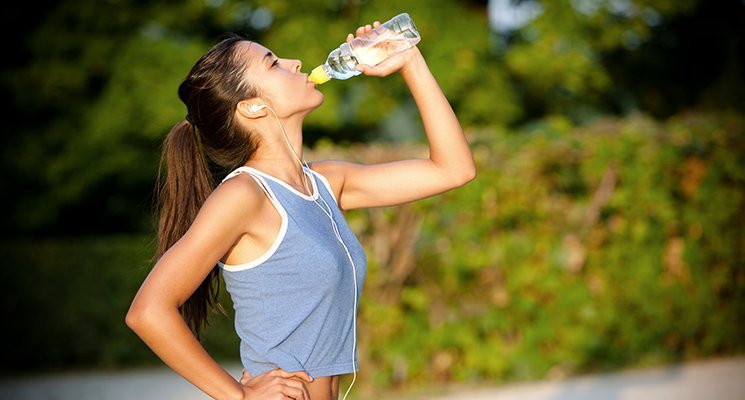Last weekend, my nine-year-old asked me to pack three bottles of water for his soccer match: one he could drink before the game and at half-time, one that I’d stuck in the freezer that he wanted to let partially melt so he could have it cold after the game, and one he could dump over his head when he felt too hot. When we got home, to my astonishment, I found all three bottles empty.
It was a good reminder for me. Athletes — whether they’re kids, varsity level, or pro players — get thirsty. The same goes for everyday exercisers. There’s a lot in the news about preventing and treating concussions, teaching gym members treadmill safety, setting swimming pool limits to prevent overexertion, and the like, but you don’t hear enough about the risks of dehydration. The fact is, fitness facilities, sports centres, coaches, trainers, and health club managers have as much of a responsibility to keep their members, clients, and players educated about hydration as they do to protect them from muscle or head injury.
So how do you do that? First, realize that many exercisers and athletes do not know that it’s dangerous to wait until thirst kicks in to take a drink. Studies have shown that most people underestimate their water needs; one researcher found that 98 percent of the members of one college football team started out daily workouts underhydrated. It’s important, then, to begin by reminding clients to drink water frequently. If you run a gym or other kind of fitness facility, have your instructors or personal trainers make periodic announcements reminding folks to take a swig. At sports centres, mandate frequent water breaks. In all facilities, put up posters that highlight the National Athletic Trainers’ Association’s rule of thumb: Drink 7 to 10 ounces — about one cup or a little more — of water or a sports drink every 10 to 20 minutes during a workout. And consider installing a water cooler next to the exit with cute signs that draw attention to it.
Of course, social media is a great way to get the message across too. Start a hydration awareness campaign on Twitter, posting a daily tweet with facts about how much water the body needs. Put up relevant videos and photos on Facebook so anyone visiting your page will see that you’re serious about hydration. Another possibility: Consider partnering up with a bottled-water company for innovative ways to spread the word. Perhaps the bottled-water supplier would agree to giving away free bottles to your members and clients one day, or to co-hosting a hydration awareness day fair at your facility.
The more creative you are about getting the message across, the more effective your message will be. And your campaign will benefit your facility as much as it does your customers: It’ll give you a new platform for getting your name out there; it will establish your facility as a caring, community-minded one; it could help lessen your liability if an unfortunate event involving dehydration occurs; and it will give you chance to help improve the lives of exercisers and athletes everywhere.
Now please excuse me while I go fill up a dozen bottles to stick in my refrigerator and freezer for my son’s next match this coming weekend.
